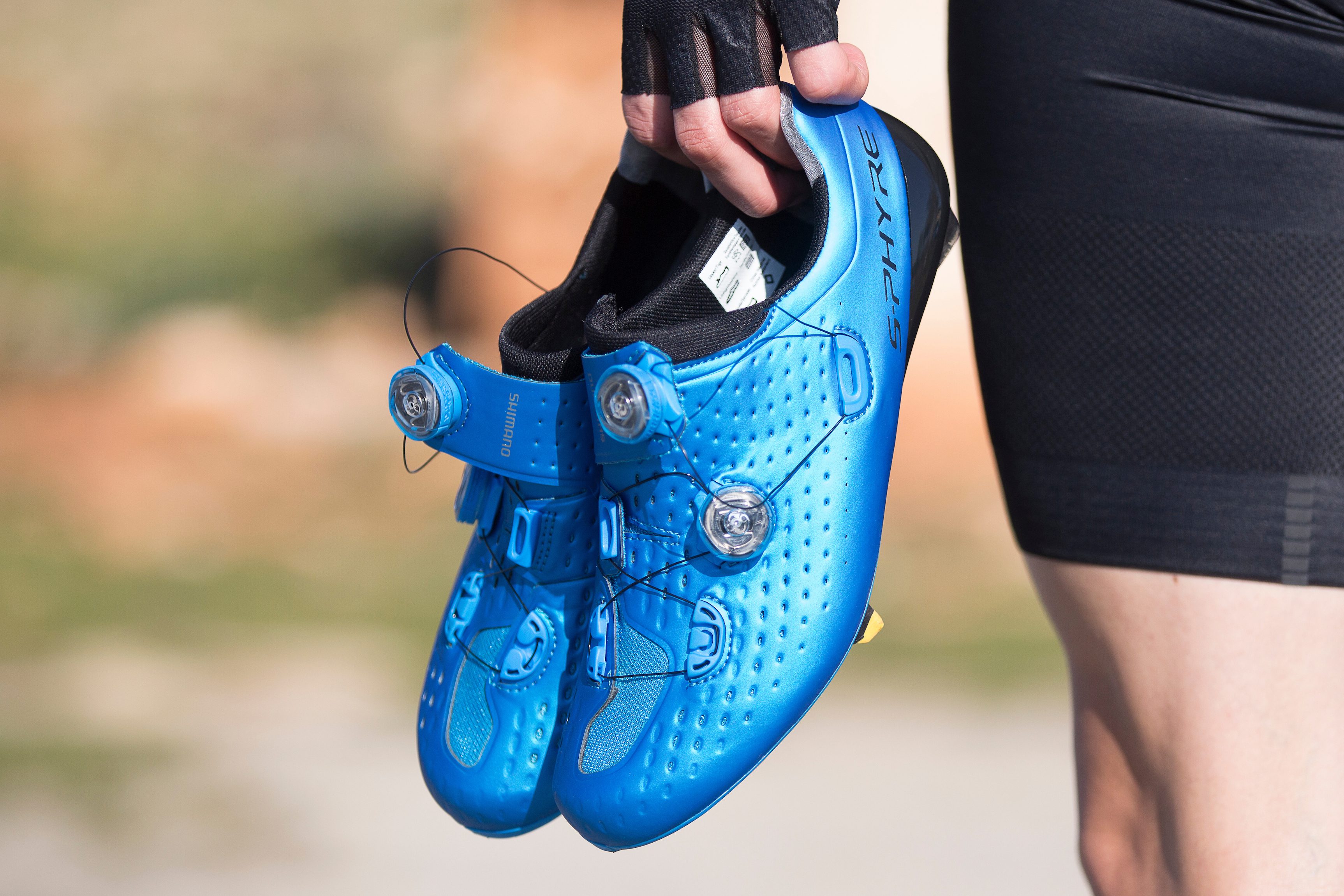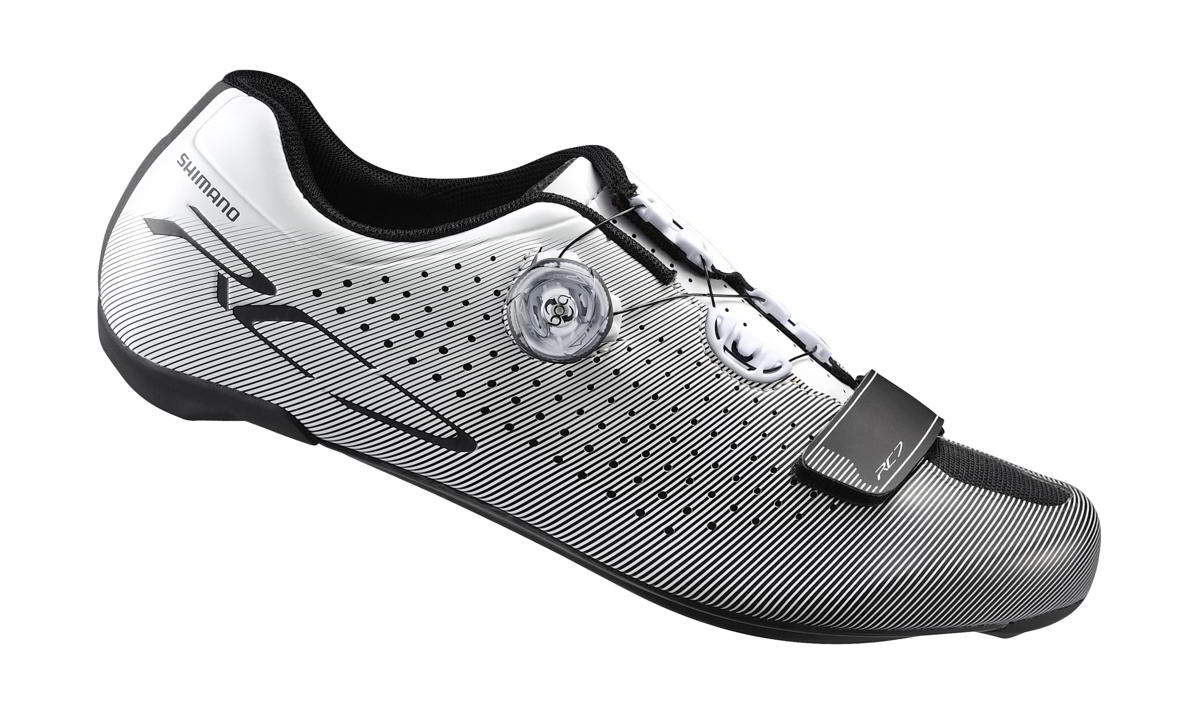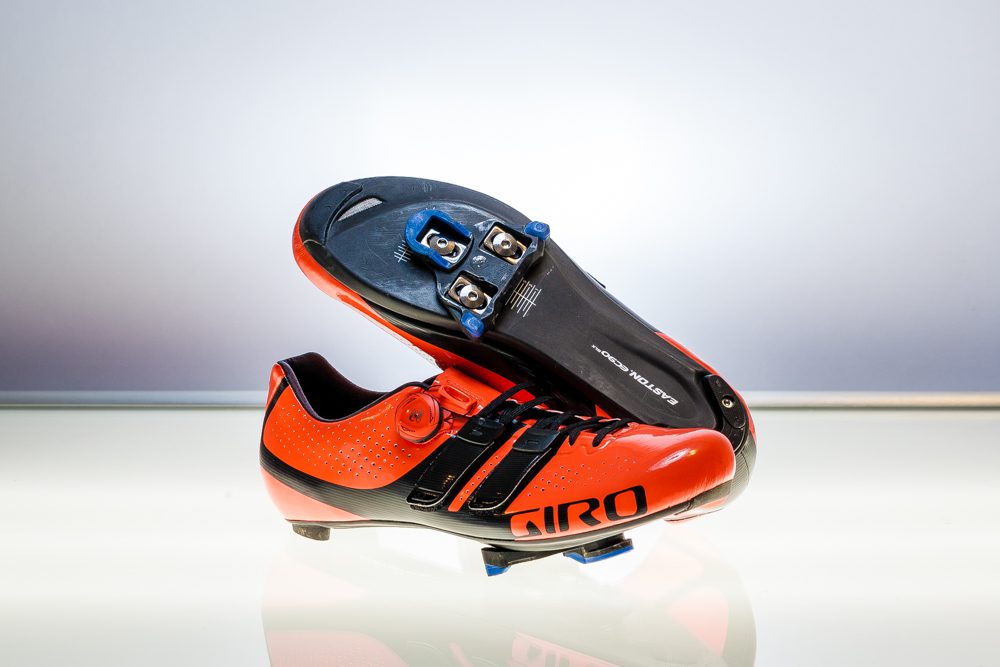Do stiff soles make for better cycling shoes?
What top end shoes, such as the Shimano RC9 and RC7, as well as the Giro Factor Techlace, have in store for you

by Mark Cohen
“The stiffer the sole, the better the power transfer efficiency,” say product designers.
Racer, gran fondo rider, someone who wants to be better connected to the bike—whichever you are, you’ll notice the impact quality shoes have on your ride. But, how stiff do they need to be to perform and give you the ride you’re after? I’ve asked the product designers behind Giro and Shimano’s latest for insights.
What are the main advantages of stiff soles versus ones that are more compliant?
Simon Fisher, a senior marketer at Giro and one of the minds behind the Factor Techlace design, says that while having a stiffer sole undeniably optimizes power transfer when pedalling, the variety of shoe types today means there’s a buffet of choice when it comes to picking a pair. Determining the type of riding you’re doing—and your budget—is always the best place to start. The main differences between carbon-sole shoes, which are undeniably stiffer, and plastic or nylon soles (which are less rigid and flex while pedalling) are stiffness and weight. For road riding, compliant soles are more affordable and probably more comfortable. If you’re a casual rider after greater pedalling efficiency and comfort between coffee stops, a less-expensive, more-compliant sole will do.
Performance riders, on the other hand, want stiff shoes mainly for their efficiency. The lack of flex saves energy when you need it most—in a sprint, when making a breakaway or on a final push up a climb. Energy is more efficiently transferred to the sole and pedal. Generally, you’ll want to find the stiffest shoe within your price range, Fisher adds.
Are stiff soles always better?
There’s a wide-range of factors that go into making a good ride. Watching the majesty of Grand Tour or experiencing the thrill of a club ride can easily seduce you into thinking about which upgrades might make yours better. Are stiff soles always better? Jessie Gascon, product manager for Shimano’s S-Phyre RC9 and RC7 road competition shoes, says ‘yes’ and ‘no.’ High-rigidity shoes are a must for racing, but if you’re an enthusiast and not someone who spends her or his Wednesday night racing crits, stiffness should be lower down on your hierarchy of needs (there are exceptions for more powerful or heavier riders).
Fit outweighs all other factors, Gascon says, and should be the No. 1 priority ahead of anything, including stiffness. A proper bike fitting always starts at the foot and by extension, your shoes. Remember that pros typically spend 6 hours racing a day. Their shoes will always be stiffer than most club or casual riders actually need. Still, it doesn’t mean owning a pair of pro-spec shoes will hurt, however. If nothing else, they’ll respond, if the mood strikes you to lead it out during your next ride.
Test ride
I’ve tested the Factor Techlace and the Shimano S-Phyre to see how stiffness translates into ride quality. Let’s start with the Giro Factor Techlace. At 210 g, the Techlace is a case study in stiffness-to-weight ratio. It is also a hell of a conversation starter in group rides on account of the hybrid BOA/lace design, which marries the comfort of laces and precision of a dial to nail fit. Up climbs, which I took out on a couple cols while in France, the ultra-stiff Easton EC90 SLX2 outsole puts a lot of soul into each pedal stroke, making for fun, responsive riding. The direct connection with the French roads underneath was undeniable. They also fit my feet incredibly well—further reason why I continue to be inspired to wear them.
The S-Phyre is just as seductive; it is similarly stiff (a 12 on the company’s stiffness scale, however arbitrary) and equally a pleasure to turn the pedals in. The one-piece outer gives you an undeniable connection between it and the bike while pedalling—a feeling of efficiency and fluidity not found in many shoes. It also happens to be incredibly lively when throwing down some efforts. With the S-Phyre, Shimano sheds its reputation for function-led design only. These things turn heads while being incredibly technical on account of their double BOA lace fit—as precise as any you’ll find in cycling. The RC7 shoes—one step down on Shimano’s totem pole—give you slightly more comfort with a hook-and-loop forefoot closure. The RC7 shoes are less stiff, but almost unnoticeably so (they rate a 10 on Shimano’s scale). The second-tier shoes are definitely race ready at a more attractive price point.

Linking all three is their position at cycling’s high-end of shoe design. The S-Phyre and Factor Techlace leave nothing to be desired. Their completeness is their most attractive feature and the greatest benefit of spending on shoes with stiff soles. Breathability, style, function—you get it all.
Are they better on account of their stiffness? Arguably yes, but only if the engine driving them is running right.
Mark Cohen has held strong opinions about style and sport since the start of his writing career. This has only worsened over time. Connect with him on Instagram @mcohensays.


